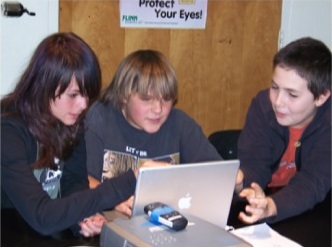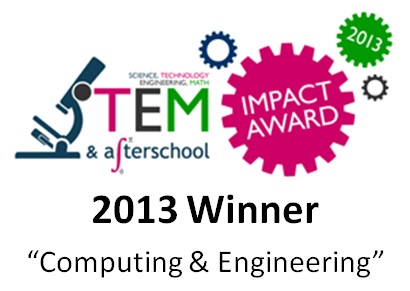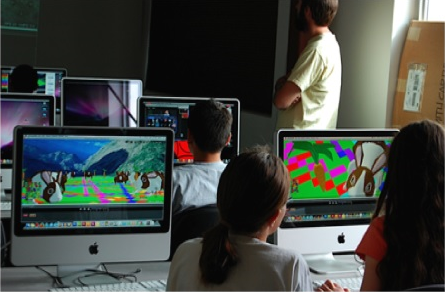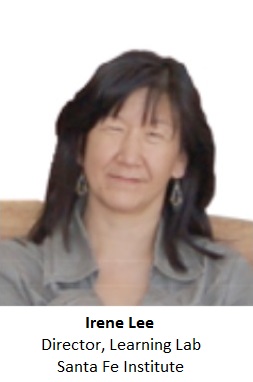Program Profiles
How do successful afterschool STEM programs do it?
These innovative afterschool programs offer impactful STEM programming to diverse populations. Read on to hear their advice for success and to learn about their program structure, evaluation results and partnership models.

Project GUTS—Growing Up Thinking Scientifically—is one of the Santa Fe Institute's K-12 educational outreach projects. The Santa Fe Institute is one of the foremost research institutions in the world and a pioneer in multi-disciplinary science. The Institute’s objectives are to discover and understand the common fundamental principles in physical, computational, biological and social complex systems that underlie many of the most challenging and profound problems facing science and society today.
The Santa Fe Institute offers a constellation of educational programs, from postdoctoral to secondary levels, including a graduate-level introduction to complex systems; graduate-level workshops in social science modeling and mathematical biology; STEM and computing programs targeting middle and high school teachers and students; and research in education.

Project GUTS reaches between 300 and 400 students per year at 30 sites across New Mexico, located in urban, rural and suburban districts. To date, more than 2,165 students have participated in the program.
To better serve girls in the Project GUTS clubs, a girls-only program called GUTS y Girls was started with an NSF-ITEST award. Going into its third year, the program offers day-long Saturday workshops and a summer camp and incorporates mentorship from female computer science professionals.
Project GUTS is an afterschool program that engages middle school students in scientific research with the aim of increasing the number of students prepared for high school science classes and careers in STEM. Students explore science topics relevant to their communities through the lens of complex adaptive systems and agent-based modeling thereby intertwining locally relevant study with cutting edge work in complex systems. Project GUTS clubs meet one day per week for two-hour club meetings over 22-26 weeks.
Project GUTS attracts diverse student bodies and learning styles through targeted recruitment, and retains them by providing relevant, engaging content and a comfortable context. Project GUTS recruits teacher club leaders from local middle schools who in turn recruit students to join the clubs. STEM-oriented high school students from various neighborhoods and socioeconomic backgrounds also serve as student recruiters and near-peer mentors. Engagement is achieved through place-based learning, which uses students' schools and neighborhoods as the context for scientific inquiry, thus making the content immediately relevant. Students use StarLogo TNG, a graphical programming language for modeling and simulation, which is highly engaging and motivating for youth.

In Project GUTS middle school students actively engage in computational thinking as they design, create, and test computer models of local relevance. These models are then used to run simulations of “what if” scenarios to answer questions about real-world concerns. For example, as part of the Project GUTS unit on epidemiology, students develop models to test if a disease would spread throughout their school population given the layout of the school, the number of students, the movement of the students, the virulence of the disease, and the number of students initially infected. In addition to learning and practicing the computational thinking skills of abstraction, automation and analysis during model design and testing, Project GUTS students gain an understanding of computer science concepts and constructs during model creation. Key concepts such as sequencing of instructions, decomposition, procedures/functions, variables and expressions, looping, control structures, conditionals and expressions are encountered in the processes of designing and implementing algorithms to solve problems. Core computer science concepts and computational competencies addressed within the curriculum are aligned with the Association for Computing Machinery’s Computer Science Teachers Association’s (CSTA) K-12 Computer Science Standards.
Over Project GUTS’ first six years (Fall 2007–Spring 2013), 1866 middle school students participated; 41 percent were female, 70 percent were from “underrepresented groups in STEM fields” (defined to include African-Americans; Hispanics/Latinos; Native Americans; females; and persons with special needs, learning or physical disabilities). Sixty-five percent of students strongly endorsed that participating in Project GUTS made them more excited to do and learn science and technology in school. Eighty-two percent of participating students successfully completed a computer model using StarLogo TNG. Youth felt that they had developed specific programming skills, with 46-63 percent of youth strongly agreeing or agreeing. Roughly the same proportion strongly agreed or agreed that they had learned how to use computer models for scientific inquiry.
The program director and an external evaluator are responsible for data collection and analysis. Assessment tools were developed by Project GUTS to measure student development of fluency with complex systems concepts and computational tools to create models and techniques to model phenomena, experiment, manipulate visualize and interpret data.
Measuring Outcomes
Project GUTS has several pieces of evidence that participants make significant learning gains. The types of data collected and tools used have varied over the years, but in the future, the program will be moving toward capturing outcomes related to STEM skills and processes.
This past year, Project GUTS developed an assessment tool to measure the knowledge and skills that students gain, which capture program learning goals informed by the CSTA K-12 Computer Science Standards, Common Core Math and the Next Generation Science Standards (NGSS). It will be piloted in the 2013-2014 school year, intended for use in 2014-2015. In its current form, the assessment tests students’ general knowledge of complex systems, computer programming terms and concepts, and includes several questions on how to interpret and de-bug code.

What feature of your program do you think has been most crucial for success?
Crucial to the success of Project GUTS has been the development of a community of learners. Our club leaders and facilitators extend and broaden our reach and ability to prepare others to be club leader through shared leadership of regional teacher professional development workshops. Their investment and excitement for the program has been contagious.
How have partnerships influenced Project GUTS?
Another key factor to our success has been a strong partnership with the Supercomputing Challenge. Through this partnership we are able to present a pathway to learn and practice computational skills from middle school through high school and beyond. A third factor is strong partnerships and supports provided by the school districts who offer Project GUTS clubs.
Working with other researchers to develop new, exciting topics for GUTS units has helped us enrich and refresh our curricular units. We’ve done projects such as the “Science of Friendship” with Arizona State University and “Modeling MRSA in the Community” with the University of Chicago and Argonne National Laboratory.
What were some of the challenges the program faced in its early stages?
An early challenge was understanding what students were learning about complex systems. Since no validated assessments instruments existed in the area of complex systems science, we needed to develop our own assessments and tools to understand student learning. Another problem faced was gender balance in clubs.
What advice would you have for programs that want to integrate STEM?
The advice we would offer other programs wishing to integrate STEM is to be student-and community-centered, thus maintaining relevance and rigor. Couch the science in topics students can relate to on a human scale, addressing topics students are surrounded with in everyday life such as contagions, traffic jams and the environment. Then engage the students actively as investigators and scientists. Encourage students to ask their own questions, devise and run experiments, and answer their own questions using STEM and inquiry. Finally, by sharing their findings with a broader community, and potentially instigating a change, demonstrates how they can make a difference in their communities through STEM.
What has Project GUTS done to make itself scalable?
Project GUTS has been successful at scaling to rural and urban communities across New Mexico. We have produced a replicable curriculum and implementers guide, developed a robust teacher professional development program, and are working to make all of our curricular units accessible electronically. Implementing a regional coordination structure and offering regional professional development workshops has enabled us to scale up.
The themes of Project GUTS curricular units (ecosystems, emergency evacuation, epidemics, traffic, pollution, social networks, shared resources, etc.) are widely adaptable to different locations and populations. To scale nationally we would offer a national conference and regional professional development workshops, disseminate our curriculum widely online, and offer an online professional development network for program implementers.